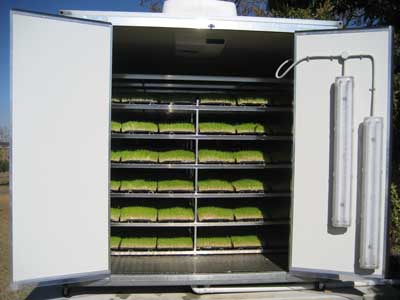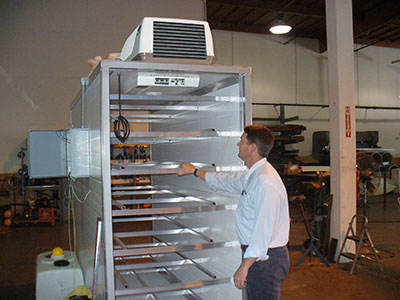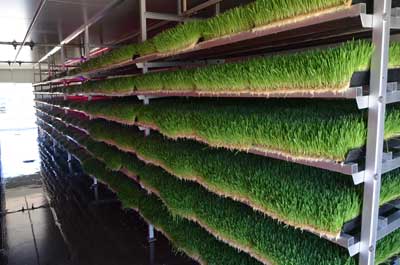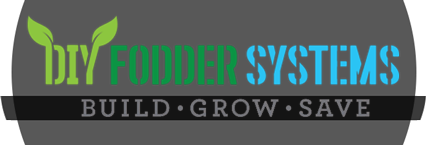What system is right for me ?
This is a very frequently asked question and there are so many variables to take into account to get the correct answer.
Variables such as livestock variety, Beef Cattle, Sheep, Goats, Pigs chickens.
The location, Anchorage Alaska – More heating required, Dubai UAE – more cooling required.
Scenario 1.
Lets look at an example of a Fodder System going into Anchorage in Alaska , sure you build one and sit it outside and keep heating it 24/7. To grow hydroponic Fodder all year round in a transportable cold room panel style system it is not impossible. And to grow Fodder all year round in a modified reefer Container is not impossible either. The biggest key to the success of the Investment into a Hydroponic Fodder system is the obtaining the Lowest Return on investment and having the lowest daily running costs, thus inturn having the highest quality Hydroponic Fodder Produced at the lowest production costs.
In this situation my advice would be to go for a transportable system but set it up inside an existing barn or shed if that is possible. It makes the Harvesting and reseeding of the system a lot easier out of the extreme weather and the running costs are a lot lower. You could also rack out in existing room if it was well insulated, but I am a fan of having transportable systems where possible. They are not a fixed asset, and they can be easily relocated if the need arises.
Scenario2.
As another example, Lets say that a beef cattle producer ( Farmer Joe to his mates) is located just west of Sydney in NSW Australia, wants to run more Beef Cattle to meet the demand for his clients in the city. Currently Joe is running 50 head of Black Angus Cattle at anyone time. By looking at the suggested feeding tables, Joe works out that he would need 8kgs per day per cow. Joe also takes into account that he only really has a moderate feed gap for two months twice a year. Joes pasture is OK for most of the year, but he really wants to make sure that his Cows keep on growing all year round that they don’t go backwards at any stage. From the Calculations Joe works out that he needs 500kg of fresh fodder per day. Joe is a handy guy so he decided to enrol in the DIY Fodder Systems online course. Joe gets his plans, tool list material lists, specific feeding rations for maximum weight gains and detailed growing instructions and Joe is on his way. Joe builds a 500kg per day system for under $12,000. He nearly purchased a 500kg/day turnkey system off one of the larger fodder corporations for $28,000. Joe also knows that any time he can easily turn around and sell his DIY Fodder System to any one else and he can easily get his money back.
Scenario 3.
Another example is Mike and Jennie, who live across the valley from Joe. They see Joes cattle in tip top condition and thriving. After chatting to Joe they decide that they should turn the old unused Dairy on the farm into a Hydroponic Fodder Production system. Mike and Jennie are not very handy people, so they ask Joe if he could help them. As Joe has done the DIY Fodder Systems course he knows that Module 4 Covers converting an already existing suitable room into a Hydroponic Fodder Production system. Mike and Jennie purchase the trays and DIY Fodder Kit to convert the room into a 1000kg/day system. Joe racks it all out for them and gets Mike and Jennie up and running. As Mike is an accountant he wants to know all about the different seeds to use and different feeding rations and growing parameters. Mike wants to learn all he can about Hydroponic Fodder Production so he enrols in the DIY Fodder System Online Course. Mike and Joe compare notes often. They know supply the local butchers with Premium Fodder Fed beef and the locals cant get enough of it.
The above Scenarios are just examples. Hopefully you can see that there is no exact straight forward answer. The system that is right for you will meet the following criteria.
- Lowest Possible Upfront Cost.
- Meets your livestock’s daily feed requirements.
- Lowest possible running costs.
- Reliable 24/7 production.
- Ergonomic, simple and easy to use.
A poorly designed, poorly constructed, non reliable Hydroponic fodder System can become an expensive hobby and a chore to maintain. That being said ,when you work with the team at DIY Fodder Systems and you end up with the correct system that ticks all of the boxes, you will be ecstatic, your livestock will be thriving, your profits will increase and you will wonder how you ever did without one.



